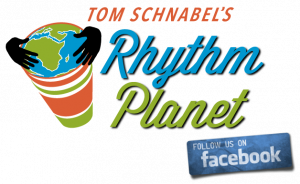The world of EDM (Electronic Dance Music) was shocked to learn today of Frankie Knuckles‘ death at just 59 years of age of complications from diabetes.
Knuckles moved from New York and started deejaying in the late 1970s in Chicago. His influence has been enormous and spread worldwide. Electronic Dance Music superstars like Daft Punk, Paul Oakenfold, the Dutch duo Kraak and Smaak, DJ Cam, and other EDM deejays all over the world have acknowledged his huge influence on the genre. Even Bollywood disco artists like Bally Sagoo have drawn inspiration from him. A young Barack Obama, when living in Chicago, was a fan as well.

The name “House Music” came from the windy city club, on Jefferson Street, where Knuckles first became popular. It was called The Warehouse. Knuckles’ would spin white-label unreleased 12″ singles with no information on them (this was pre-computer and record labels were not yet interested in the genre). People would ask Knuckles what type of music he was playing, and because neither he nor anybody else knew who the artists were, they just named it after The Warehouse: House Music.
House music was less polished than disco, less slick, and used more samples. But it also sampled many more music styles, including R&B, soul, motown, rock and other forms. House Music creates an uninterrupted music stream of consciousness experience, without the obvious beginning and endings of normal records. House music not only helped launch what is now known internationally as EDM, but also raised the stature and fees of deejays who were good at it. DJ’s were no longer schlumps who just played records one after another, but artists who created entirely original and unique mixes for the first and only time. Today top EDM deejays travel the world and make more money than most bands.
House music, like disco, was hedonistic but also democratic, welcoming dancers into a safe haven for gays, black, and latinos; in fact, early crowds at the Warehouse were mostly gay and black. This was a far cry from the velvet rope and exclusivity of of disco meccas like Studio 54. House music had a more organic sound than the more synthetic disco. And whereas disco was the venue of coke spoons, the rise of house music coincided with the increased club use of drugs like MDMA, better known as ecstasy, now regularly used and abused in EDM events.
During the mid to late 1980s, I used to sometimes go to house raves in unannounced downtown location, often in lofts in the industrial district. There was also a gay club called Catch One on Pico & Crenshaw Blvd, which had many dancers both gay and straight, enjoying the mix. At 2 a.m. the lights would go on, the drinks taken away, then the lights went down and the house music continued until 4 a.m. Everybody had a wonderful time.
Here is Frankie talking about the birth of house music in Chicago:
Here is the man in action in an 1977 audio clip at the Warehouse, the beginning of it all:

